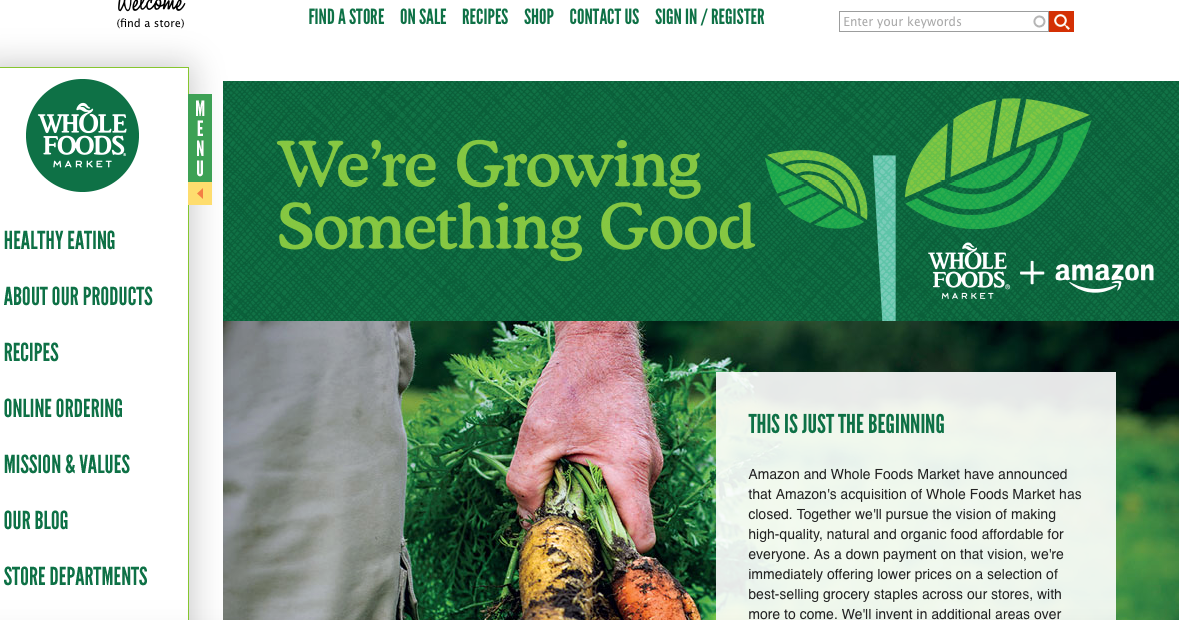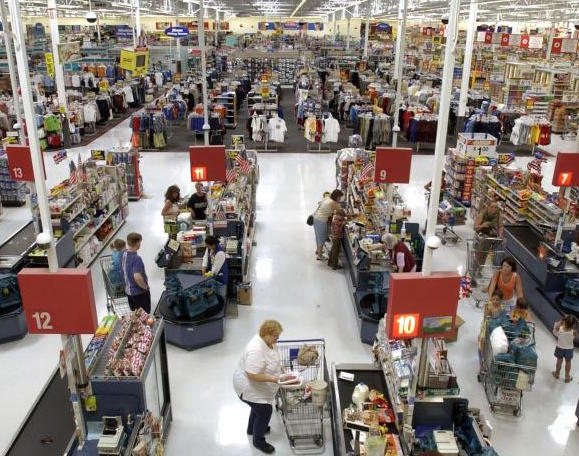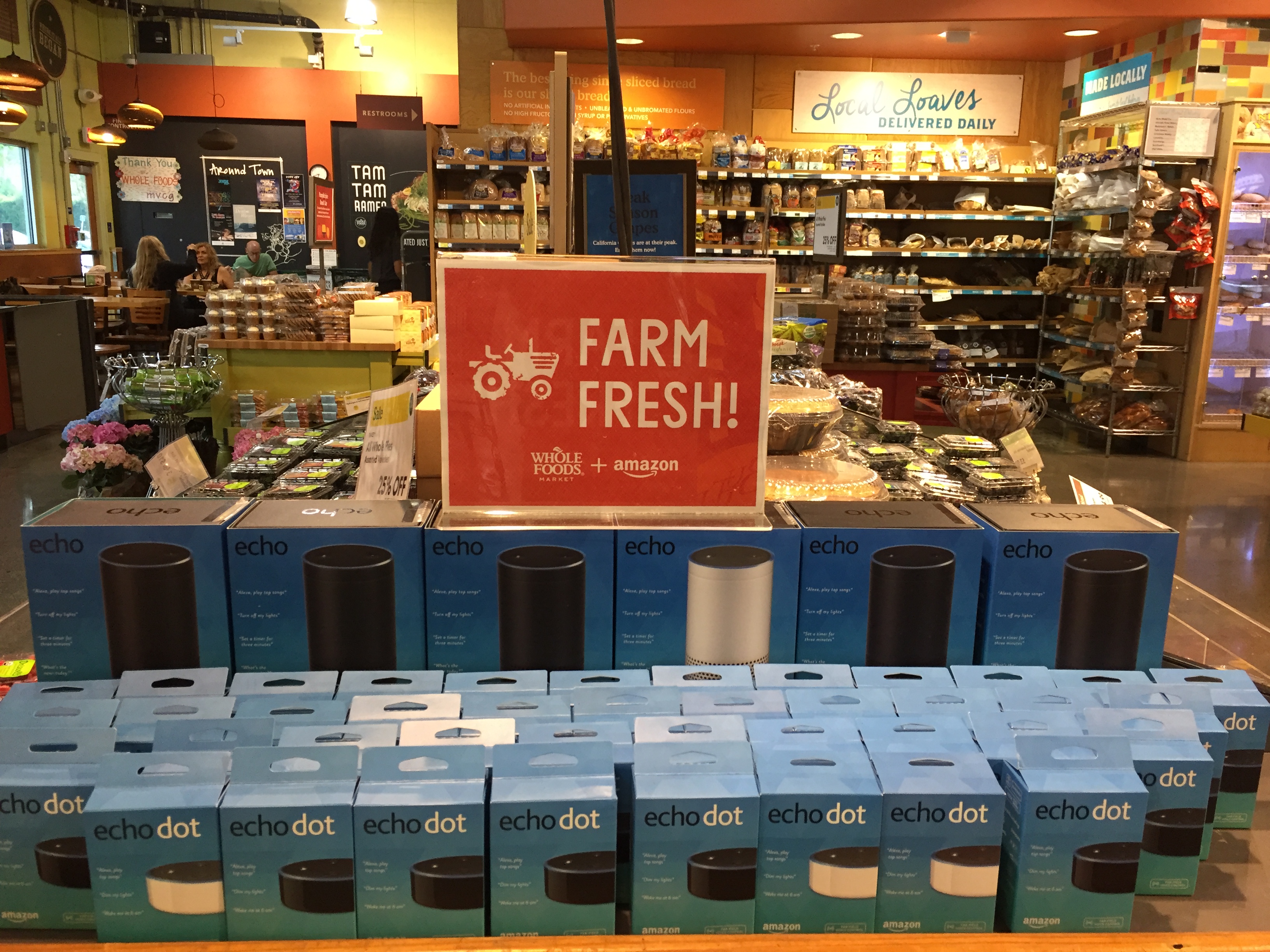
Who will win the ultimate race to tether consumers from computer to store? The now-familiar public feeding frenzy of tech giants eating retail dinosaurs has spun into a high gear with Amazon’s purchase of upscale Whole Foods and Google’s Walmart play. Will it be Brand or Brawn? Beauty or Bulk?
Yes, big-box, old-school retail is in an adapt-or-die Darwinian struggle. What’s more interesting and important is why, to my mind, Amazon has all the leverage and power. Here’s why:
Experience Over Technology
Amazon’s Whole Foods purchase, a move that taps the experiential element of shopping, will direct and define the future of retail. Amazon went upmarket in the acquisition, elevating its brand value and customer experience. Brand matters. Whole Foods is where you shop if you’re fortunate enough to be able to pay more for higher quality fish, meats, cheeses, breads, fruits and produce. More importantly, it’s your store of choice if you value design, pleasant lighting, helpful staff, and a tasteful vibe. Whole Foods + Amazon equals the methods and values of an upscale grocery story experience (in hundreds of stores) multiplied by the world’s #1 online retailer and delivery wizard.
In contrast, there’s the technology play. Google has a history of putting tech before brand and product. It’s a master of prototyping, consistently introducing digital products that become ubiquitous (Google, Chrome, Gmail, Android, Google Maps), integrated services that generate tremendous revenue and value. But Google has struggled with premier, brand-heavy launches — the disastrous Google Glass, the Moto X smartphone flame-out – and the less-than-scintillating Nest acquisition. There’s an art and science to evaluating, creating, marketing, and selling products for high margins. Data suggests that the male-centric, engineering-heavy Google (much in the news of late for the wrong reasons), doesn’t grasp this subtlety.
That’s why Google’s teaming up with the gorilla of big-box retail is less about Google, and more about a Hail Mary pass from a vulnerable behemoth. Walmart products will now be available via Google Assistant, and Walmart customers will be able to use technology similar to that found in the Amazon universe, placing orders via voice and receiving AI-driven personal recommendations.

Big Box Plays Catch-Up
To Walmart’s credit, this is a fairly bold attempt to play catch-up with Amazon. But it’s too little, too late. The tide shifted long ago, and Amazon rode the waves, while many in traditional retail got beached. When the Seattle online retail champion announced the Whole Foods deal earlier this summer, the stock of Kroger, SuperValu, Costco, Sprouts Farmers Market and other grocery firms all plummeted, and even Target and Walmart were dented. Here’s why: Once Amazon marries its superior technology and online delivery expertise with the Whole Foods experience, scores of less innovative retailers will watch their stocks take another hit, and they’ll have only themselves to blame. Laggards in tech, brand, and in-store experience, they moved in lockstep with the zero-sum game of supply chain and cost, and now find themselves hurtling in a race to the bottom.
Today, Millennials and families increasingly seek engagement when they shop. They’ve ditched the old-school big-box outlets and sprawling, suburban malls in favor of smaller, authentic stores. Successful shopping centers have been newly redesigned to connect shoppers with landscaped outdoor space and a more natural environment that offers alternative, complimentary activities, like music or play. In other words, the antithesis of Walmart dullness.
 By purchasing Whole Foods, Amazon grabbed the first leg of the only real core competency it lacks: the tools and foundation to master, elevate and dominate the brick-and-mortar experience. Considering that more than 20 years ago, the company only sold books online, the transformation has been extraordinary. Today Amazon is where many of us shop online for just about everything, enjoy our online entertainment, and now, with the Whole Foods acquisition, meet our daily hunger and thirst. Sure, they could work on their interface, but does anyone really believe Kroger or SuperValu can compete?
By purchasing Whole Foods, Amazon grabbed the first leg of the only real core competency it lacks: the tools and foundation to master, elevate and dominate the brick-and-mortar experience. Considering that more than 20 years ago, the company only sold books online, the transformation has been extraordinary. Today Amazon is where many of us shop online for just about everything, enjoy our online entertainment, and now, with the Whole Foods acquisition, meet our daily hunger and thirst. Sure, they could work on their interface, but does anyone really believe Kroger or SuperValu can compete?
As for Google, it’s hard to see a big upside. From a position of pride and leadership, it must be a little humbling at the Googleplex to be down in the warehouse, rubbing shoulders with low-end Walmart. First, Apple reinvented computer and smartphone retail with its gleaming, ultra-modern 500 stores (Google has none), and now Amazon seems poised to lead how we see, taste, sample and buy food in its techno reinvention of Whole Foods Markets.
We are what we eat, and if Amazon has its way, cheaper prices and an elevated experience featuring healthy and organic produce and meats may hook us on a radical new approach to food, nutrition, and cooking, with great benefits for all.
Big-box food outlets will seem cheap in comparison.


